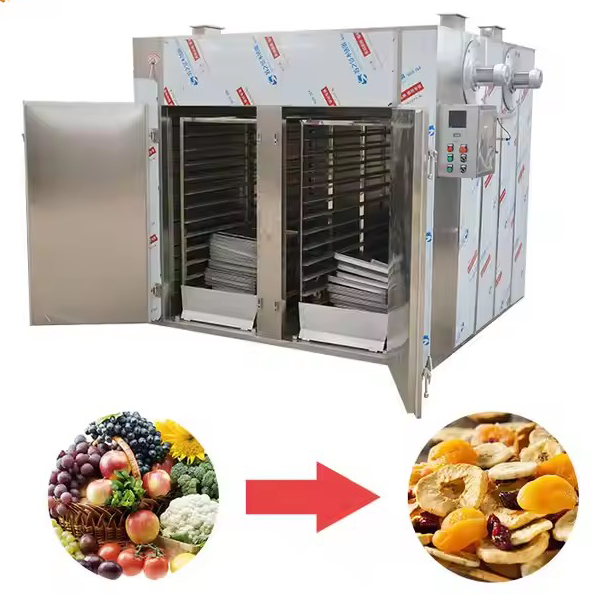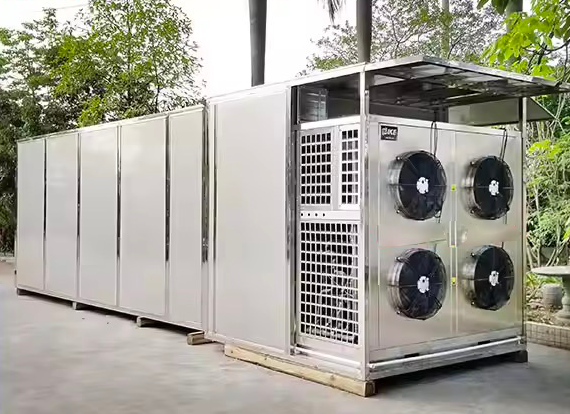
Content Menu
● Introduction
● Understanding Heat Pump Dryers
>> Advantages of Heat Pump Dryers
>> How Heat Pump Dryers Work
● Importance of Regular Maintenance
>> Key Maintenance Tasks
● How Often Should You Care for Your Heat Pump Dryer?
>> Daily Care
>> Weekly Care
>> Monthly Care
>> Annual Care
● Best Practices for Maintaining Your Heat Pump Dryer
● Common Issues with Heat Pump Dryers
>> 1. Inconsistent Drying Results
>> 2. Excessive Noise During Operation
>> 3. Increased Energy Consumption
● Advanced Maintenance Techniques
>> Calibration Checks
>> Software Diagnostics
>> Component Upgrades
● Conclusion
● FAQ
>> 1. How often should I clean my heat pump dryer filters?
>> 2. What are signs that my heat pump dryer needs maintenance?
>> 3. Can I perform maintenance on my heat pump dryer myself?
>> 4. How do I know if my heat pump dryer is operating efficiently?
>> 5. What should I do if my heat pump dryer stops working?
Introduction
Heat pump dryers have revolutionized the way we dry food products, providing an efficient and eco-friendly solution for preserving the quality and nutritional value of various foods. As a manufacturer of food dryers, it is essential to understand how to maintain these machines effectively. This article will explore the importance of regular care for heat pump dryers, how often maintenance should be performed, and the best practices to ensure optimal performance.

Understanding Heat Pump Dryers
Heat pump dryers work by using a refrigeration cycle to extract moisture from food products. Unlike traditional drying methods, which often rely on high temperatures, heat pump dryers operate at lower temperatures, preserving the integrity of the food while ensuring thorough drying. This technology is particularly beneficial for dehydrating fruits, vegetables, meats, and herbs.
Advantages of Heat Pump Dryers
- Energy Efficiency: Heat pump dryers consume less energy compared to conventional dryers.
- Nutrient Preservation: The low-temperature drying process helps retain vitamins and minerals in food.
- Versatility: They can be used for a wide range of food products.
- Environmentally Friendly: Reduced energy consumption leads to a lower carbon footprint.
How Heat Pump Dryers Work
Heat pump dryers utilize a closed-loop system that circulates refrigerant through evaporator and condenser coils. The process begins with the evaporator coil absorbing heat from the surrounding air. This heat is then transferred to the refrigerant, which evaporates and moves to the compressor. The compressor increases the pressure and temperature of the refrigerant before it moves to the condenser coil, where it releases heat into the drying chamber. As a result, moisture is extracted from the food, which is then collected in a water tank or drained away.
Importance of Regular Maintenance
Regular maintenance is crucial for ensuring that your heat pump dryer operates efficiently and lasts longer. Neglecting maintenance can lead to:
- Reduced drying efficiency
- Increased energy consumption
- Shortened lifespan of the machine
- Compromised food quality
Key Maintenance Tasks
1. Cleaning the Filters: Regularly clean or replace filters to ensure proper airflow and efficiency.
2. Checking Seals and Gaskets: Inspect seals for wear and tear to prevent moisture leaks.
3. Inspecting the Heat Exchanger: Ensure that the heat exchanger is clean and functioning properly.
4. Regular Software Updates: Keep the dryer's software updated for optimal performance.
5. Professional Servicing: Schedule professional maintenance at least once a year.

How Often Should You Care for Your Heat Pump Dryer?
Daily Care
- Visual Inspection: Check for any visible signs of wear or damage.
- Clean Filters: Depending on usage, clean or replace filters daily or weekly.
Weekly Care
- Deep Cleaning: Perform a more thorough cleaning of the exterior and accessible parts of the dryer.
- Check Water Drainage: Ensure that water drains properly from the unit.
Monthly Care
- Inspect Internal Components: Open the machine (if safe) to check internal components for dust or debris accumulation.
- Test Performance: Run a test cycle with a small batch of food to ensure proper functionality.
Annual Care
- Professional Maintenance: Hire a technician to perform comprehensive maintenance checks.
- Software Updates: Ensure that all software is up-to-date.
Best Practices for Maintaining Your Heat Pump Dryer
1. Follow Manufacturer Guidelines: Always refer to the user manual for specific maintenance recommendations.
2. Keep Surrounding Area Clean: Maintain a clean environment around the dryer to prevent dust accumulation.
3. Monitor Performance Regularly: Keep an eye on drying times and energy usage; any significant changes may indicate a need for maintenance.
4. Use Quality Ingredients: Ensure that only high-quality, clean ingredients are used in the dryer to prevent contamination and buildup.
5. Educate Staff: Train staff on proper usage and maintenance procedures to ensure everyone is aware of their responsibilities.
Common Issues with Heat Pump Dryers
Understanding common issues can help you address problems before they escalate:
1. Inconsistent Drying Results
If you notice that some batches are not drying evenly, it could be due to:
- Overloading the dryer
- Inadequate airflow
- Incorrect temperature settings
To resolve this issue, ensure that you are not exceeding the recommended load capacity and that airflow is not obstructed within the drying chamber.
2. Excessive Noise During Operation
Unusual noises can indicate mechanical issues such as:
- Loose components
- Worn-out bearings
- Debris caught in moving parts
If excessive noise occurs, turn off the machine immediately and inspect it for any visible problems or contact a technician if necessary.
3. Increased Energy Consumption
If your energy bills spike unexpectedly, consider:
- Checking for air leaks in seals
- Cleaning filters
- Ensuring proper insulation around ductwork
Regular monitoring can help identify inefficiencies early on.
Advanced Maintenance Techniques
For those looking to delve deeper into maintenance practices, consider implementing advanced techniques:
Calibration Checks
Regularly calibrate temperature sensors and timers to ensure accuracy in drying cycles. This will help maintain consistent product quality over time.
Software Diagnostics
Many modern heat pump dryers come equipped with diagnostic software that can help identify issues before they become serious problems. Regularly check these diagnostics as part of your monthly maintenance routine.
Component Upgrades
As technology advances, consider upgrading components such as fans or heating elements if they become outdated or inefficient. This can lead to improved performance and energy savings in the long run.
Conclusion
Caring for your heat pump dryer is essential not only for its longevity but also for maintaining the quality of your dried food products. By implementing regular maintenance routines—daily inspections, weekly cleanings, monthly checks, and annual professional servicing—you can ensure that your dryer operates at peak efficiency. This proactive approach will save you time and money in the long run while delivering high-quality dried foods that meet your customers' expectations.

FAQ
1. How often should I clean my heat pump dryer filters?
You should clean your filters daily or weekly, depending on how frequently you use the dryer.
2. What are signs that my heat pump dryer needs maintenance?
Signs include longer drying times, unusual noises during operation, or increased energy consumption.
3. Can I perform maintenance on my heat pump dryer myself?
Yes, many basic maintenance tasks can be performed by yourself; however, it's advisable to hire a professional for comprehensive checks annually.
4. How do I know if my heat pump dryer is operating efficiently?
Monitor drying times and energy usage; significant changes may indicate inefficiency or potential issues needing attention.
5. What should I do if my heat pump dryer stops working?
First, check power connections and reset the machine if necessary. If problems persist, consult a professional technician for diagnosis and repair.











